On the banks of Loch Assynt, a Loch (Scottish Gaelic for Lake) in the Highlands in North-West Scotland, are two ruins. Both of them are in advanced stages of decay and have very interesting stories linked with them.
First of them is the Calda House, which was constructed in the 18th century by the members of the Clan Mackenzie. The house once used to be a three storied abode that burnt down after a lightning strike apparently because the occupants continued to celebrate on the Sabbath day of the Lord. Looking at the state of the house today, one would guess the age of the building to be much more than only a couple of centuries.
This is how the Calda House would've looked when it was still inhabited and not burnt down. Look at the detailed maps. Each floor has at least 6 rooms. Sometimes it is difficult to perceive how something as big as a house can be annihilated by a local fire. Hmm. Anyways, the house is allegedly haunted by several ghosts now. I was just imagining how the area would look after the day lights faded. There were no apparent arrangements for artificial lighting. A sight of the creepy, lonely house standing miles away from any human population is enough to scare anyone. Ghosts are just garnishing.
This was where our little bus was parked as well. As you can see, there's not a soul in sight for miles. Sheep don't count. And there are no bright street lights that we expect from a road.
And this was how the more famous of the two ruins, the Ardvreck Castle was supposed to look like when it was not in ruins. This building is a little older than the Calda house and is very much in ruins itself as you will see in a few moments. The castle is now a risky building with the masonary ready to jump out at you at the slightest provocation. So care is advised if you visit this monument.
And this was the path we were advised to take. The path wasn't VERY boggy but it was boggy nevertheless. A bog is a wetland that contains peat that is formed by the remains of dead plants. peat is a very important fuel in these regions.
The Castle was stationed on a low rocky hill next to the lake. The slippery terrain and the rocks below make this a very difficult picture to take. I think I was a little foolish to attempt this picture. Don't follow my example please. The area doesn't need any more resident ghosts.
 Here is the first view of the legendary Ardvreck Castle built by the members of Clan Macleod in the 16th century. The structure is imposing even in decay. This was apparently built with the support of the devil and, in exchange, one of the daughters of the Macleods was to marry the Devil. Devastated, the maiden flung herself out of a window of the castle. Her ghost is supposed to haunt the ruins till date. In front are some canoes that provided a good perspective to the picture.
Here is the first view of the legendary Ardvreck Castle built by the members of Clan Macleod in the 16th century. The structure is imposing even in decay. This was apparently built with the support of the devil and, in exchange, one of the daughters of the Macleods was to marry the Devil. Devastated, the maiden flung herself out of a window of the castle. Her ghost is supposed to haunt the ruins till date. In front are some canoes that provided a good perspective to the picture. This is a small inlet of the Loch Assynt jutting into the castle grounds right next to the magnificient ruins. The water was clean yet grey because of the poor lighting.
A view of the seemingly placid Loch Assynt from a hill on its bank. Some of the white dots in the distance are sheep grazing.
A sample of what the view from the castle's windows would've been like. I wonder how people who lived in such beautiful surroundings could be so cruel to each other. Scotland's history is so full of anger, violence, hatered, and betrayal, that it isn't surprising that so many Ghosts continue to haunt these regions.
My friend Andy from Taiwan clicking a risky picture. And in the distance, visible through the window are some of our tour companions. Me and Andy were often the last ones to get back to the bus. But we were definitely a disciplined batch because we still made it in time.
The canoes are finally out on the Lake. The temperatures were quite low so I bow to the courage and passion of these sailors.
And here is the castle up close. Quite imposing, isn't it?

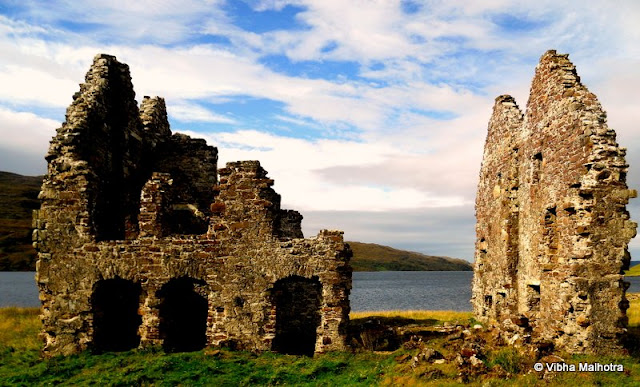



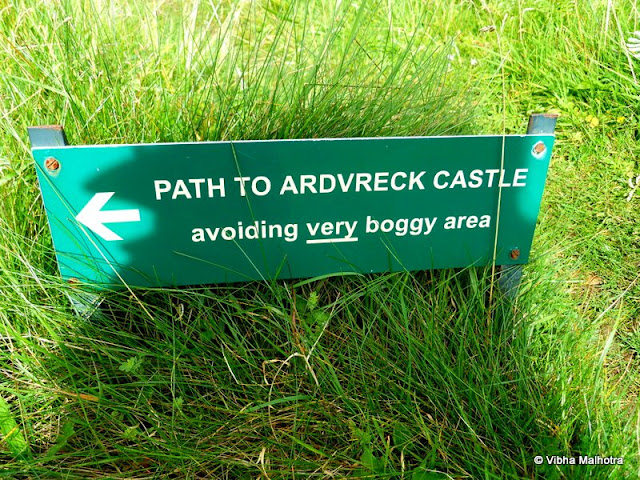
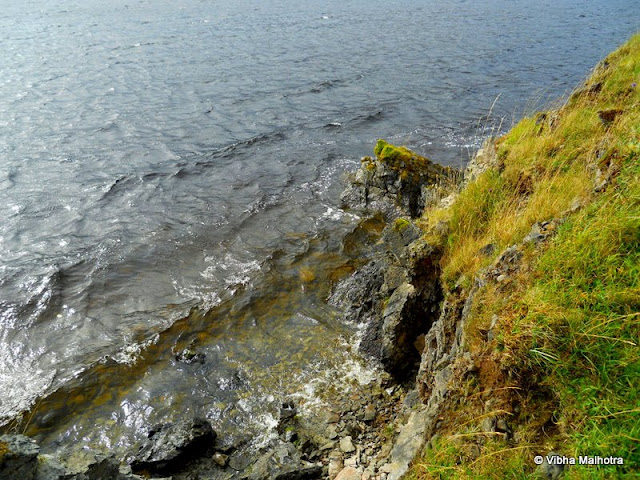
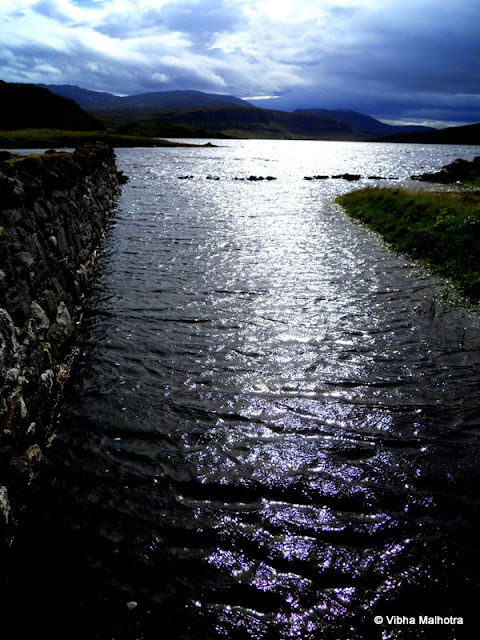


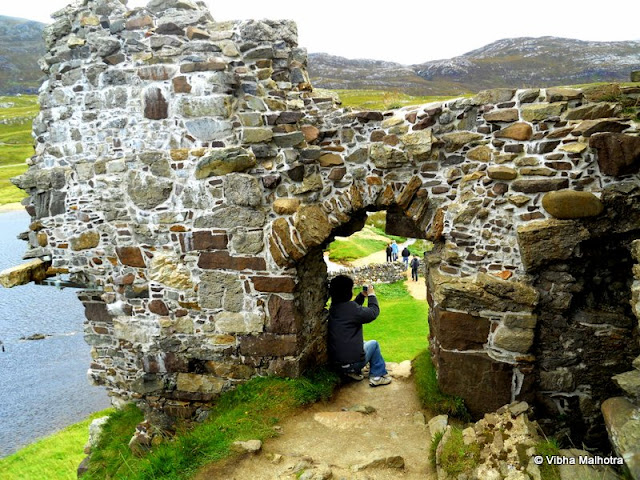
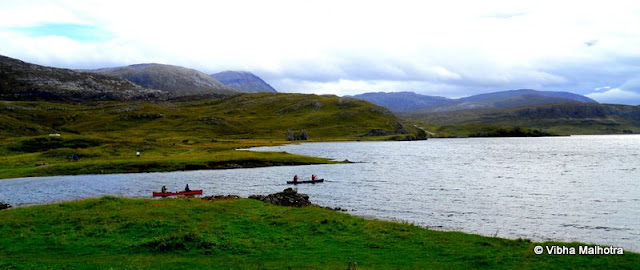
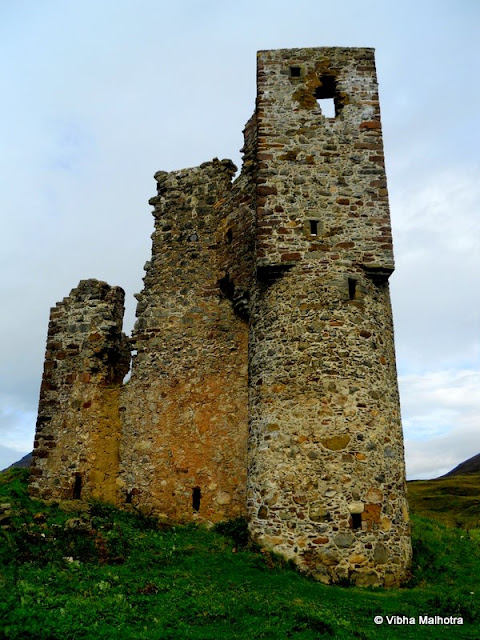

.jpg)
Comments
On the banks of Loch Assynt, a loch (Scotland does not have lakes)
in the North-East Highlands - actually Loch Assynt, Calder House and Ardvreck Castle are on the North-West of Scotland...
Wish you had left your name...:)
Anyways, do visit again. A few more post on Scotland may be coming out soon.